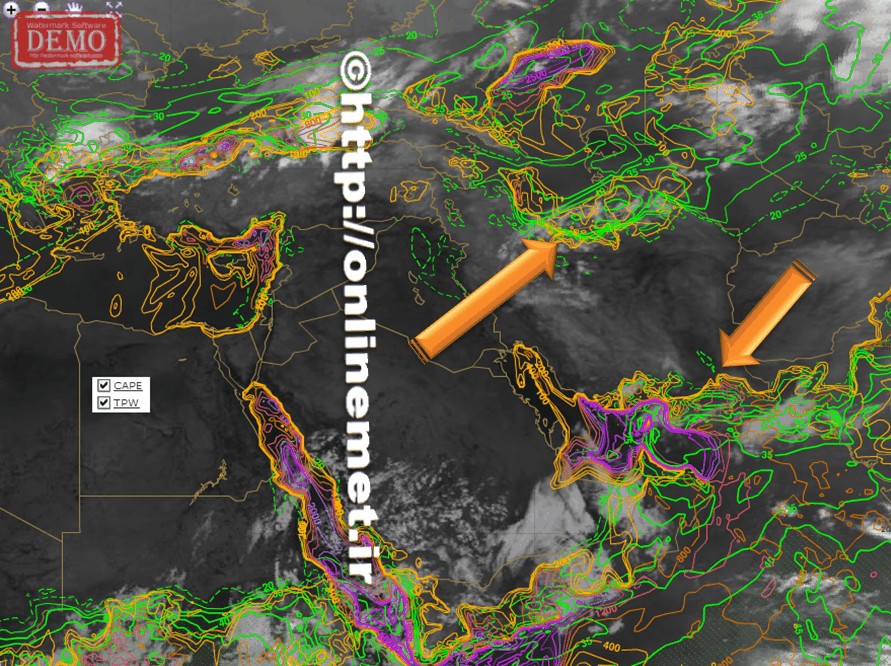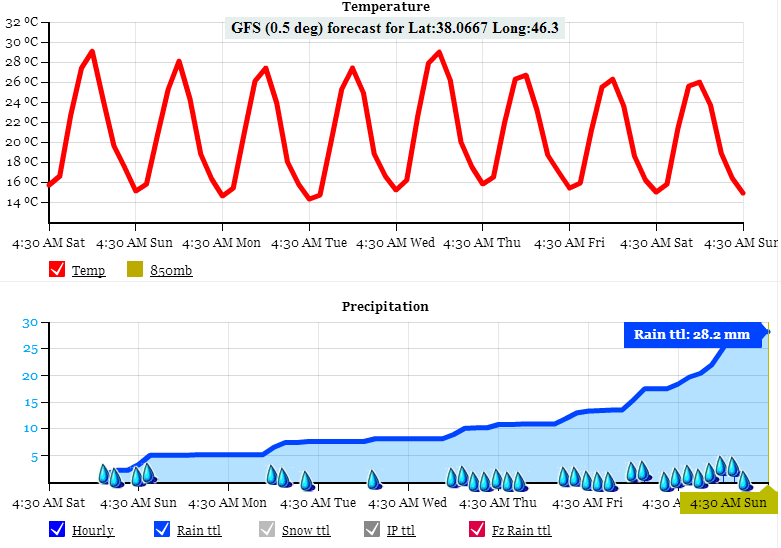Picture This: World Cup Flooding & Spectacular Lightning
- Published: June 27th, 2014
94 57 33 0

By
Andrea Thompson
Follow @AndreaTWeather
Think you might have missed an awesome weather shot while you were busy watching the World Cup? Fear not, Climate Central has you covered. We’re rounding up the best weather and climate images from the week and giving you the story behind them. From Mother Nature’s best attempts to keep Cup fans from a match to a chart that illustrates just how bad California’s drought is, here are our six picks:
[h=2]Space Lightning #SpaceVine is your new favorite hashtag. Eleven Vines have used it, though only one of them is actually from space. On Friday, Reid Wiseman, a flight engineer
currently aboard the International Space Station, posted an out-of-this-world clip that shows lightning over Houston at night. If this clip is any indication, we hope Wiseman and his fellow ISS travelers take more ownership of #SpaceVine.
[h=2]Flooding in Recife And we have to include the
major flooding in Recife, Brazil, caused by torrential rains that fell the morning of the crucial USA-Germany match. Nearly 3.5 inches of rain had fallen on the city by 9 a.m. local time on Thursday, and it was still coming down by match time. While the pitch was playable, fans had trouble getting to the stadium after the rains caused flooding in the streets. Luckily, American fan Teddy Goalsevelt took charge in forging the waters. We should warn him, though, that driving through floodwaters is a bad idea. As the U.S. National Weather Service advises:
Turn Around, Don’t Drown!
[h=2]Canadian Tornado If this image doesn’t convince you of the destructive power of even an EF1 tornado — the second lowest rating on the
Enhanced-Fujita scale — we don’t know what will. The patio chair was reportedly thrown across the street and into the windshield of the car by the wild winds of a tornado that touched down in Amaranth, Ontario, which lies 90 miles to the northwest of Toronto. The tornado left a track more than 4 miles long and nearly 500 feet wide when it touched down at 3:30 p.m. ET on Tuesday, Environment Canada
told CTV News in Toronto. The tornado was part of a line of thunderstorms that also spawned another EF-1 tornado near the town of New Tecumseth.
[h=2]Patriotic Storm What a shot! Kevin Ambrose over at the Capital Weather Gang went into Washington, D.C., on Wednesday night hoping to get a nice picture of storms that were expected to develop. And boy, did he succeed. After the sun set, the storms began to brew and the skies opened up. Taking shelter in the Jefferson Memorial, Ambrose took a couple of snaps of lightning bolts, including the one in the background of the Washington Monument at 9:36 p.m. Nicely done, Kevin. Check out more of his, and others’, shots
over at the CWG blog.

Kevin Ambrose snapped this photo of a lightning strike over Washington, D.C., with the Washington Monument in the foreground as he took sheter from a downpour in the Jefferson Memorial.
Click image to enlarge. Credit: Kevin Ambrose
[h=2]California Needs Rain The drought that currently has California firmly in its grip has been three years in the making, but the 2013-2014 rain year has marked the time where it intensified deeply. One third of the state is
now in the highest category of drought (“exceptional”) recognized by the U.S. Drought Monitor. In a June 19 press conference, Jake Crouch, a climate scientist with the National Climatic Data Center, told reporters that the drought was comparable to the one that affected the state in the late 1970s. This chart,
tweeted by the National Weather Service office in Hanford, shows this quite starkly. The current rain year is neck-and-neck with that of 1976-1977 for the second-driest year on record (No. 1 is 1923-1924) since record-keeping began in 1895.
[h=2]Cool East, Warm World While 2014 has a
shot at becoming the warmest year on record globally (or at least placing in the top 10), it’s been downright cool in the eastern half of the U.S. In fact, much of the eastern half of North America was one of the
few colder-than-normal spots on the globe for the year so far. The cool conditions were fueled by the persistent southern plunging of the so-called
polar vortex, which brought frigid Arctic air with it. The snow cover that was left in many places, along with record-setting ice on the Great Lakes, helped keep things cool into spring. The rest of the planet, and indeed, the western half of the U.S., baked. California had its warmest January-May on record, while the globe as a whole had its fifth warmest.

How tempartures around the globe departed from average from January through May 2014, with warmer-than-normal areas in red and colder-than-normal in blue.
Click image to enlarge. Credit: NOAA
Brian Kahn contributed to this article.





















